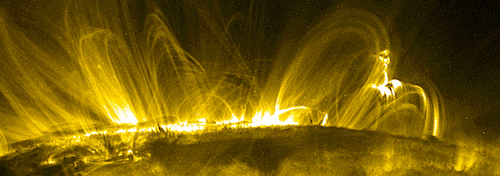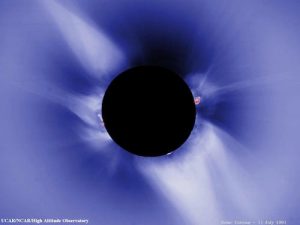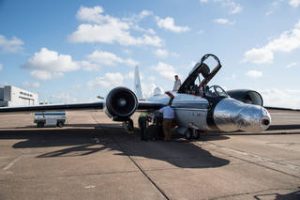
On August 21st, scientists won’t just be on the ground conducting research and observing the total solar eclipse, they’ll be taking their research to the air and deploying aircraft. By doing so, the planes will be able to fly along the path of totality which will enable them to take observations for a much longer period of time than just being in one location on the ground. NASA’s twin WB-57 will be flying during the eclipse utilizing special telescopes to study the Sun’s corona and Mercury. The scientists leading that experiment from the Southwest Research Institute will be hoping to learn more about how energy flows in the solar corona and more about the makeup of Mercury’s surface. Experiments like these will certainly add to the understanding of space weather events which is critical for ensuring we protect our infrastructure in an ever growing technology dependent society.

The solar corona is the Sun’s outermost part of its atmosphere and the first mystery this NASA mission will try to solve. This total solar eclipse offers a unique opportunity to see the Sun’s corona when the moon passes between the Sun and Earth. Since the Sun’s bright light usually hides the corona the moon will then block the Sun’s bright light and the corona will then be visible. One unsolved mystery about the solar corona is why is it so hot? Since the solar corona is the Sun’s outermost layer, you would expect it to be cooler but it isn’t. The solar corona is in fact a lot hotter than the Sun’s surface. One theory on why the corona is so warm could be due to what is called nanoflares.
Nanoflares are these frequent explosions that are too small to detect but could collectively be releasing heat into the solar corona. Amir Caspi of the Southwest Research Institute in Boulder, Colorado says, “We see the evidence of nanoflare heating, but we don’t know where they occur.” Not only could nanoflares explain why the corona is so hot, they may also provide insight to why the corona has these loop features. Another thing the images of the solar corona may lead to is a hypothesized family of asteroids called vulcanoids. If these are discovered, this will provide scientists with a lot more insight to planet formation. Scientists believe these asteroids are remnants from the creation of the solar system and orbit between the Sun and Mercury.
The second objective of this airborne mission will be to take observations of the planet Mercury. According to a press release from NASA, observations of Mercury will also be taken a half-hour before and after totality of the eclipse. NASA’s main goal from these images will be attempting to map the variation of temperature across the surface of Mercury. The night side of Mercury can cool to a couple hundred degrees below zero while the day side can hit temperatures as high as 800 degrees. This is the result of Mercury rotating much slower than Earth, in fact, one Mercurial day is about 59 Earth days. Scientists are hoping these images will allow them to infer just how quickly the surface cools. Determining what the soil is made of and how dense it is, will provide clues to not only how Mercury formed but other rocky planets as well.

The twin WB-57 jets will be taking off from a field near NASA Johnson Space Flight Center in Houston, Texas. These two jets will be flying high in the stratosphere and will get to observe totality for about 3 and a half minutes each as they fly over Missouri, Illinois and Tennessee. The main benefit of flying that high is the on-board telescopes will be taking high quality images of the Sun compared to being on the ground. Flying at 50,000 feet will allow the telescopes to be above much of Earth’s atmosphere where it’ll be 20-30 times darker. These will be prime conditions to photograph detailed structures and motions occurring in the Sun’s corona. These images are going to complement NASA’s Solar Dynamic Observatory spacecraft which photographs the Sun but not nearly as fast as the telescopes onboard the twin jets. Scientists are really excited about the possibilities of the research during this eclipse and what mysteries they may uncover.